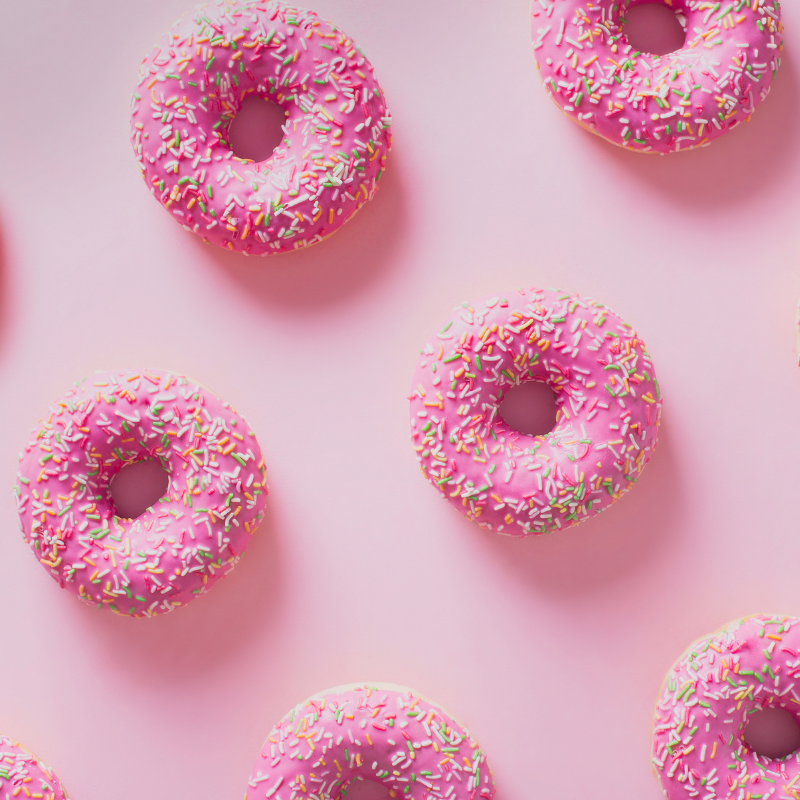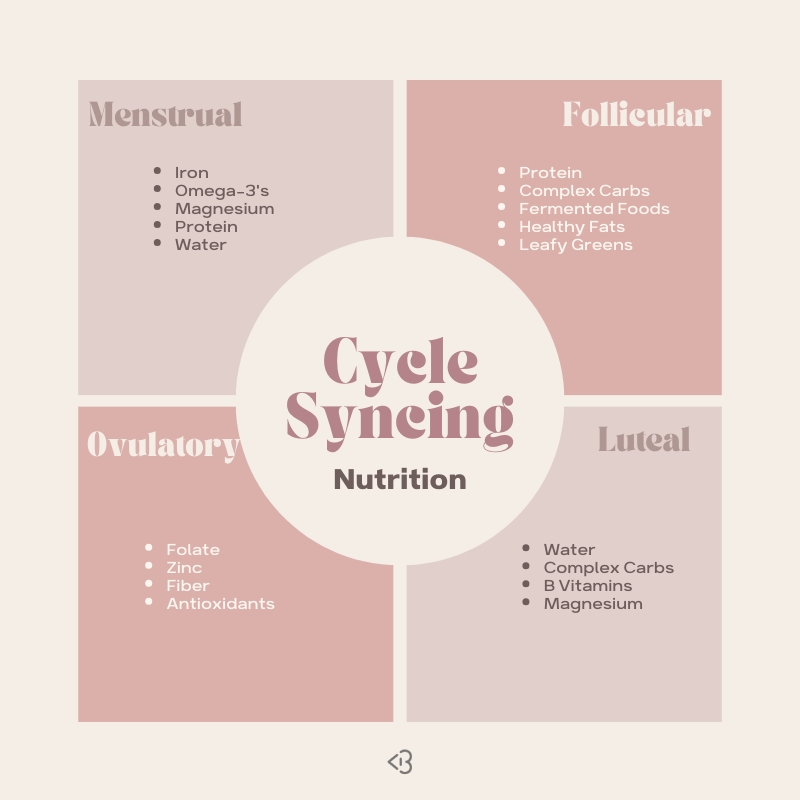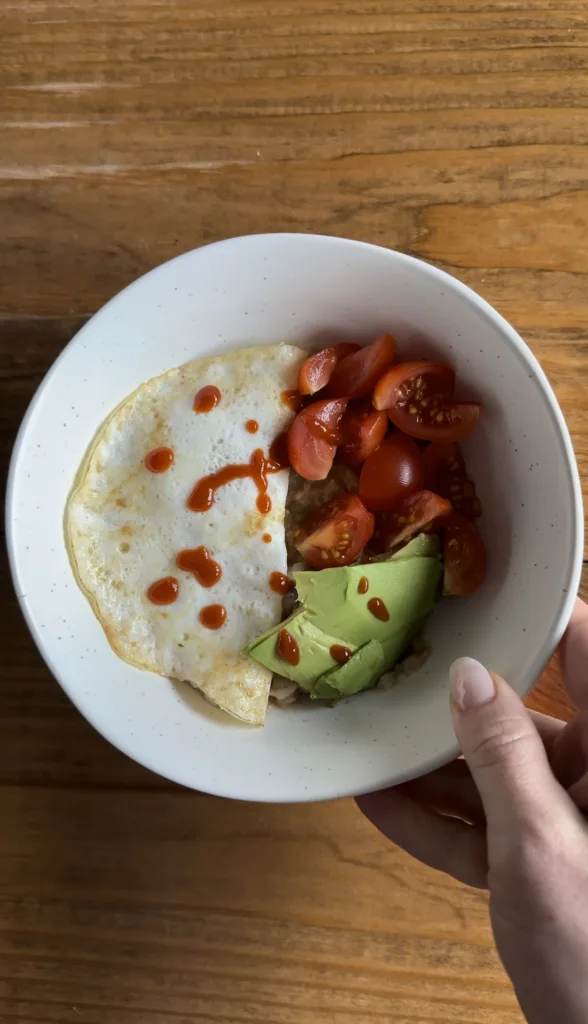
If you’re someone who deals with a menstrual cycle, it’s safe to say you’re no stranger to the ups and downs of each month. Thanks to hormonal changes with each phase, it can be quite a bumpy ride. Can cycle syncing food smooth the journey and help you feel better? Let’s find out!
What is Cycle Syncing?
Cycle syncing is adjusting your nutrition and exercise to the phases of your cycle. These adjustments cater to the changes in your hormones to help balance things out. In this article, we’ll focus on the best foods to eat during each phase.
The Benefits
Hormones can be chaotic (is there anything we haven’t blamed them for?). But did you know that certain foods may help balance them out and improve symptoms of hormonal changes during your cycle? Other foods replenish vitamins and minerals or remedy symptoms.
Some reported benefits of cycle syncing food include:
- Decreased cramping, bloating, and other period symptoms
- Improved mood
- Decreased stress and anxiety
- Decreased fatigue
Cycle Syncing Diet
But not like, a diet diet.
Here are some nutrients to target during each phase of your cycle with some easy ways to get them on your plate.
Menstrual Phase (Days 0-7)
Ugh, your period. Maybe you’re bloated and crampy, and all you’re craving is some comfort food and a nap. This is when estrogen is the lowest. Here’s what to eat.
Iron
When you lose blood, you lose iron. Eat iron-rich foods like lean meat, beans, leafy green vegetables, and lentils, PLUS Vitamin C-rich foods like citrus, strawberries, tomatoes, bell peppers, and broccoli to help maximize iron absorption.
Omega-3s
Foods high in omega-3 fatty acids like salmon, flaxseeds, chia seeds, and walnuts fight inflammation and might help with cramping.
Foods to support energy levels
The best way to keep your energy levels up? Don’t skip meals! And try to include a serving of protein with each meal and snack.
Magnesium
If you suffer from menstrual migraines (same, ugh), some studies suggest that supplementing with magnesium could prevent an attack.
Follicular Phase (Days 8-13)
Your energy is back and you’re feeling great! Support your energy levels with lean protein, whole grains, legumes, starchy vegetables, and fruit.
Fermented foods
Fermented foods improve your gut microbiota, which is vital for estrogen metabolism. We’re here to support hormone balance, so we want to support that metabolism in any way we can! Plus, we love gut health.
Healthy fats
Finally, healthy fats like avocado, salmon, and olive oil, plus fat-soluble vitamin E foods like sweet potato, leafy greens, and nuts support healthy ovaries and reproductive health – especially important if you’re trying to conceive!
Ovulatory Phase (Days 14-15)
The ovulatory phase is…when you ovulate! During this short phase, keep eating a healthy, balanced diet and the foods that support estrogen balance.
Cruciferous vegetables
Think broccoli, cauliflower, and Brussels sprouts.
A chemical in cruciferous veggies called 3,3-Diindolylmethane may support the liver to help your body get rid of excess estrogen.
Zinc, folate, and antioxidants
These are especially important if you’re trying to conceive, but also play a role in reproductive health even if you aren’t!
Luteal Phase (Days 16-28)
Here we are, approaching menstruation again. A lot of us start to feel PMS symptoms like mood swings, headaches, and bloating. You might feel extra hungry too.
Drink your water!
Hydration is important in every phase, but especially when you’re headache and bloat-prone.
Starchy vegetables
Carbs will help with the hunger part, especially if you’re incorporating the right ones. Starchy veggies like sweet potatoes will fuel your body with carbs, but also pack in some nutrients, like our bestie fiber!
Magnesium
Magnesium can help with anxiety, headaches, and even water retention. Oh, and research shows that many Americans aren’t getting enough! One study actually states that around 48{32c02201c4e0b91ecf15bfd3deecd875caca8b9615db42cfd45ce3d8de8d0829} aren’t meeting the recommended intake. A supplement may help, but you can also include magnesium-rich foods like dark chocolate (yes!), avocado, nuts, and legumes.
The Cons of Cycle Syncing
Cycle syncing can be great BUT (there’s always a but, right?), as with all wellness trends, there are some cons to cycle syncing. First, it’s not supported by a ton of science yet. We really just need more research to confidently say this works, who it works for, and really nail down the benefits.
Second, this may not work for people with irregular periods or people who are on birth control. If you have an irregular period, it’s going to be a lot harder to track which phase you’re in. Birth control uses synthetic hormones to prevent ovulation, which means cycle syncing likely will not be as effective.
Don’t overthink it
If planning your diet around your cycle feels like too much, that’s FINE! The best thing is to eat a balanced, varied diet made up of foods that make YOU feel good.
Adding in some of these nutrients may help, but there’s no way to say one thing will work for everyone. Our bodies, lifestyles, menstrual cycles, and hormone levels are all different. If you feel like your symptoms are impacting your life or require special attention, definitely chat with your healthcare provider to construct the best plan for you.
Have you tried cycle syncing food? Did you notice a difference? Tell us in the comments!









